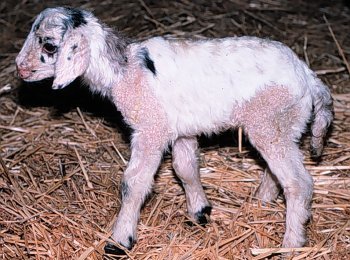 Ever thought about what makes us so special? As humans, what is it in us that separates us from other species? A closer look at human-nonhuman chimera research can give a better view of the situation. Currently, human-nonhuman chimeras, with cells from both humans and animals, can be created thanks to microsurgery and genetic engineering. There is very strong opposition to this research, however, mainly stemming from society’s somewhat narrow definition of “human,” what it means to be human, and how to preserve that definition.
Ever thought about what makes us so special? As humans, what is it in us that separates us from other species? A closer look at human-nonhuman chimera research can give a better view of the situation. Currently, human-nonhuman chimeras, with cells from both humans and animals, can be created thanks to microsurgery and genetic engineering. There is very strong opposition to this research, however, mainly stemming from society’s somewhat narrow definition of “human,” what it means to be human, and how to preserve that definition.
Let’s do some comparisons here. Fraternal twins, biologically, are the result of two fertilized eggs that distinctly grow. In chimerism, two fertilized eggs combine to create a viable progeny with two genomes. Within a species, chimerism is fairly common (even in humans). Interspecies chimerism is much less common, largely due to the fact that conditions for that to occur are rare. The first instance of this was seen in 1989 when scientists at the University of California created a goat-sheep hybrid, or “geep.” Research on this topic did not gain attention, however, until 2003, when a student at the Shanghai Second Medical School removed the genetic material from a rabbit embryo and inserted human DNA in its place, create a human-rabbit chimera (Yu).

The Sheep-Goat Hybrid: the “Geep”
This research allowed the field of chimerism to blossom, allowing a closer look into cell differentiation, organ formation, and tissue development all without the use of humans (infants) as the subjects. Chimera research has provided the most accurate view of embryo development, in fact, which is why it appeals to so many for medical research. Many advancements in regenerative medicine have taken place due to chimera research, as in the case of patients with spinal cord injuries.
Many shy away from chimera research, however, mostly because of the religious, ethical, and health threats the field would pose to humans. In terms of the spread of disease, with the spread of diseases between species (AIDS, avian influenza, swine flue) so fresh in our minds, it’s hard to write off the fact that chimeras could be potential carriers for threatening diseases. Human-nonhuman chimeras thus are not the safest glance into human development, because interactions of genes with protein products could eventually cause significant health problems.
Chimerism research is also opposed by many religious groups. Judaism, Islam, and Christianity points out that the animals used in research are “lower” than humans, leading to impurity in any human considered a chimera. On the other hand, Hindiusm considers cows sacred and mixing of human and cow genes would degrade hte integrity of the cow. Religous followers want to preserve the sanctity of the human genome and do not want to “mix” any genetic information with non-human species (Yu).
Ethical concerns also plague the chimerism issue. The “species barrier” is a boundary that is expected to be followed in society, meaning people want to preserve the boundaries that separate humans from every other species. The prospect of human-nonhuman chimerism also seems like “backwards evolution” to some, reversing the effects of the evolutionary advantages in each species.
The topic of chimerism research has thus been highly contested, especially in the last few years. Most of the opposition to the research lays in the fact that once we cross the boundary between species, people are not sure where we will lie as humans, and how it would lead to/block the natural process of evolution. This research is the classic example of “messing with nature” in which researchers have a large opportunity to completely change the layout of the way people think of genetic engineering, but but these scientists are also opposed by the members of society who want to preserve their environment the way it is. Of course, one can’t really pick a side in this case, and it’s interesting how this specific field of research has caused such a stir in the world of genetic engineering. Surprisingly, though, it’s not that the world doesn’t really want to know more about chimeras, it’s just that once more and more chimeras are developed, where does that leave us as humans?
~Tamanna Sahni
Yu, J. (n.d.). Rethinking Humanity: The Chimera Debate. Retrieved April 12, 2016, from http://www.bu.edu/writingprogram/journal/past-issues/issue-2/yu/